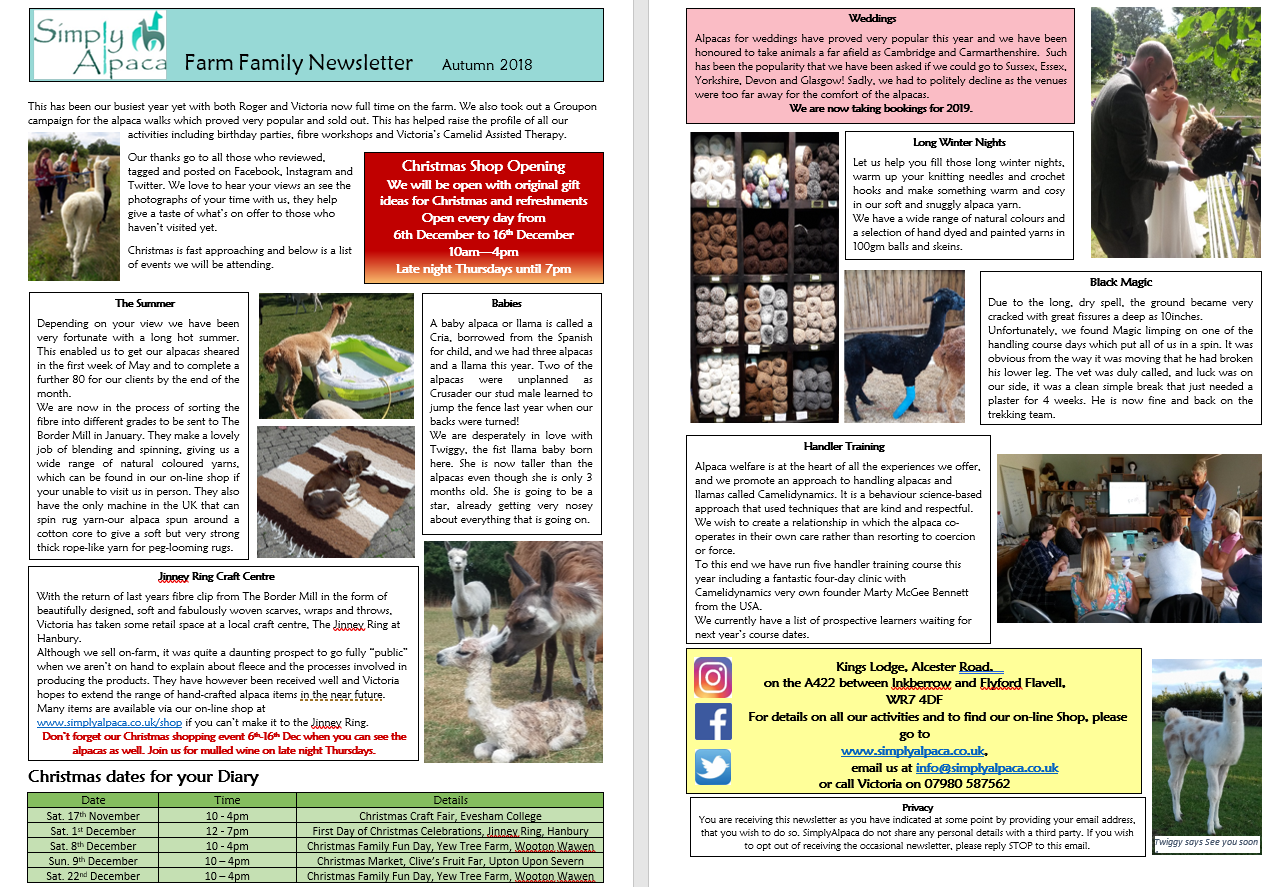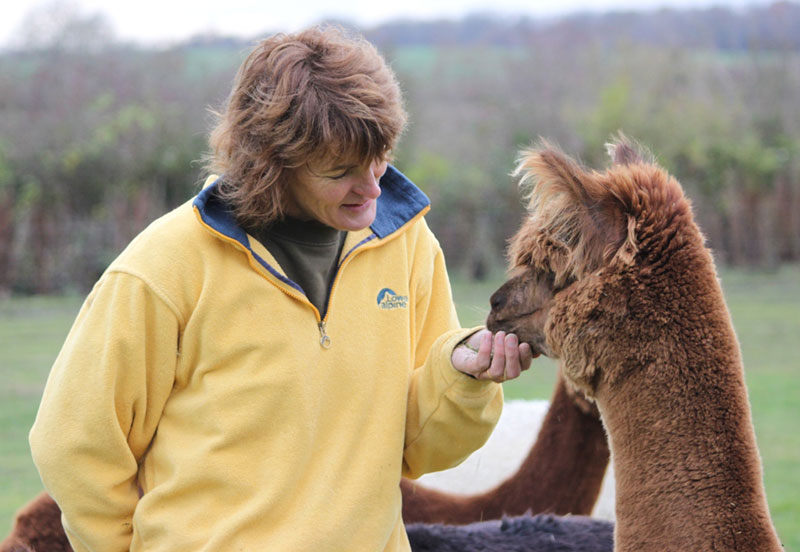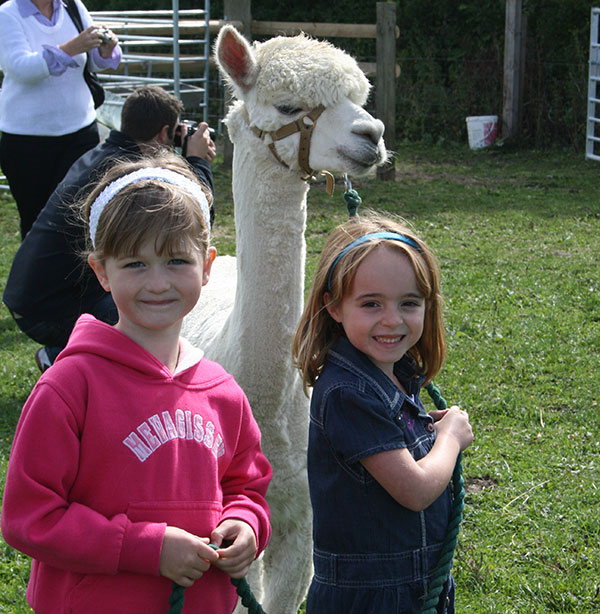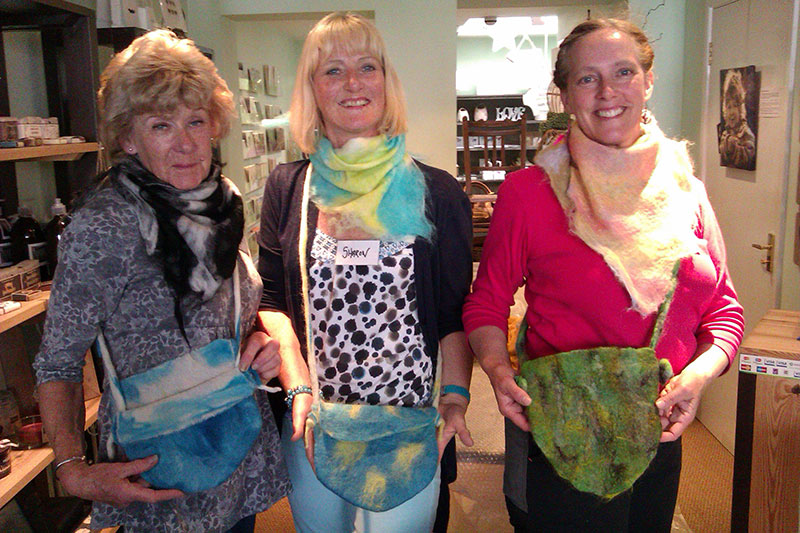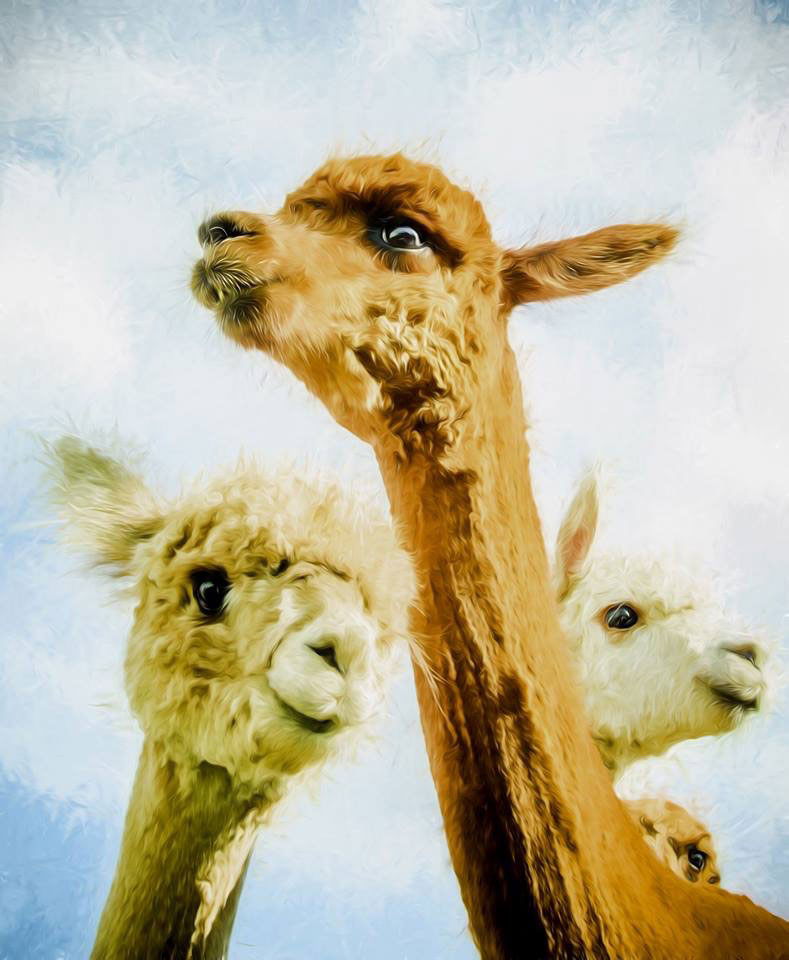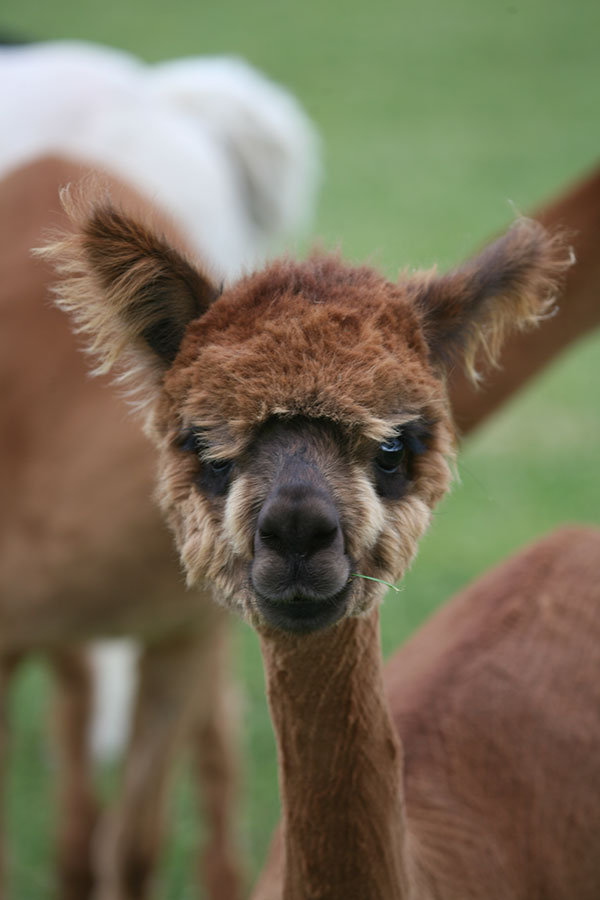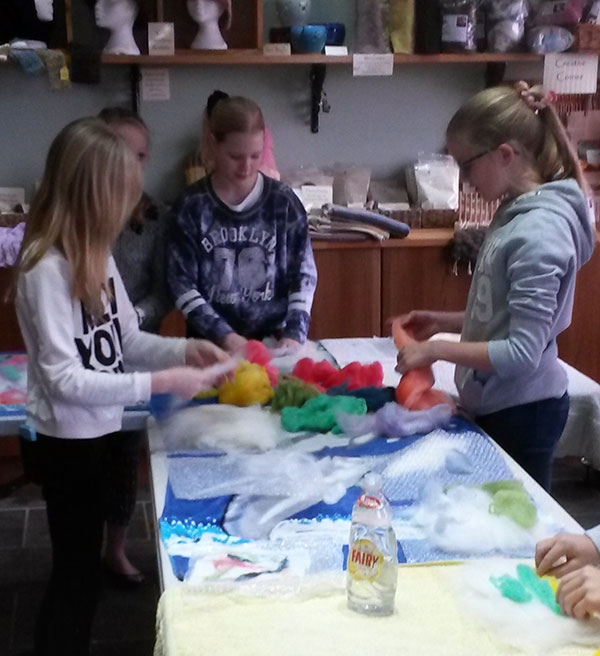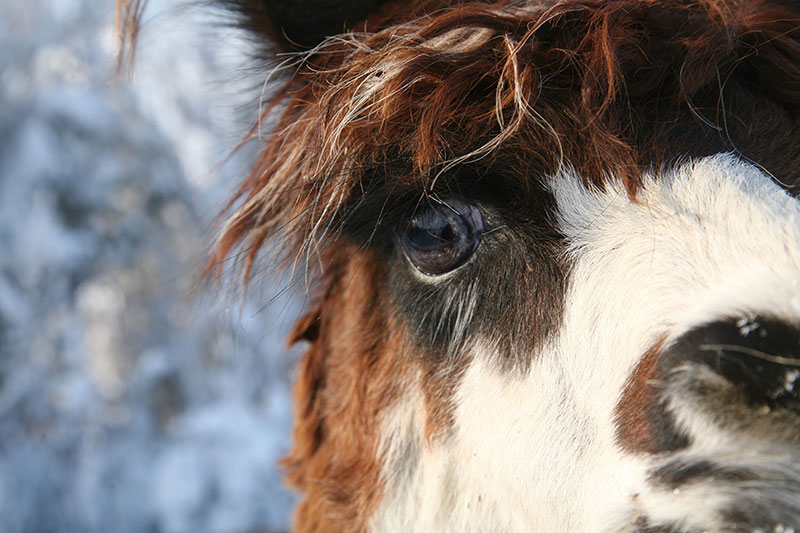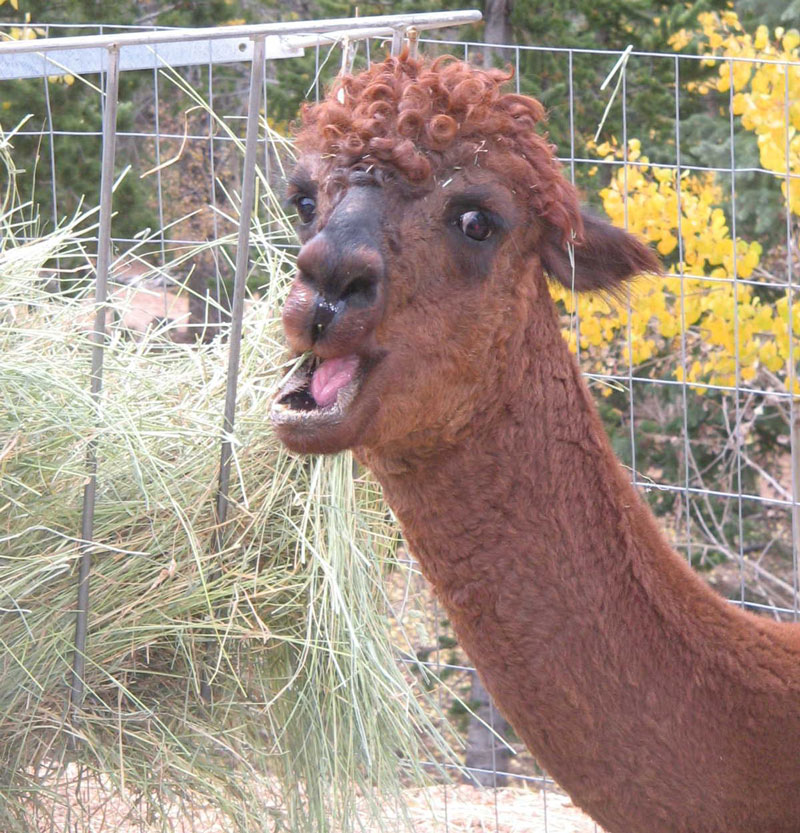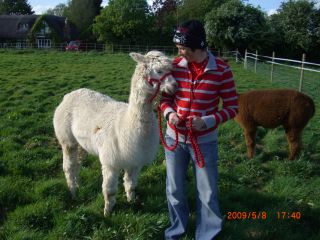|
Did you know that there are no wild alpacas but that they have been domesticated for six thousand years and that they were nearly wiped out in the early 1500’s? Their native home is the Altiplano in the Andes Mountains. Alpacas were revered by the Inca for the fineness of the fabric and garnments that could be produced: light, soft, lustrous and very warm due to the hollow nature of the fibres. Only royalty wore this luxurious fibre. But when the Spanish conquered the Incas, they destroyed their civilization and slaughtered the alpacas by the millions, bringing the species to the brink of extinction. A few were hidden by natives on the hight altiplano which survived to provide the basis of the current population. They provide a wide range of natural coloured fibre from snow white to jet black with shades of brown, fawn, rose and grey in between. Alpacas are social herd animals that in this country live in single sex groups after the age of about ten months. This prevents unwanted couplings and prevents males fighting for the females when they are receptive after giving birth. Generally they are gentle, inquisitive, intelligent and observant creatures making them a pleasure to work with, but as prey animals, they are cautious and nervous if they feel threatened, moving away to a safe distance where they will turn around and look at you. The herd may attack smaller predators such as foxes with their front feet, and can spit and kick. Due to the soft pads on their feet, the impact of a kick is not as dangerous as that of a hoofed animal, yet it still can give quite a bruise, and the pointed nails can inflict cuts. Many farmers are now choosing to keep alpacas as guard animals for their sheep or chickens. Spitting Like many creatures, they appreciate having their own space, especially when at the feed trough and may not like an unfamiliar alpaca or human getting too close, especially from behind. This is when they may chose to spit, but as a general rule they do not do this very often towards humans. The “spit” is sometimes only air and a little saliva but alpacas commonly regurgitate acidic, noxious stomach contents (generally a green grassy mix) to project at their chosen target. Not all alpacas spit just as not all human beings are grumpy, their personalities are just as individual and it often used as a way of determining social hierarchy. Physical Contact Once settled in a new home and they know their owners, feeling safe and confident around them, alpacas may allow their backs and necks to be stroked. It is a case of tolerating the contact rather than searching it out as a dog would. Many still do not like their legs and feet handled so have to be acclimatized to it gently in order that husbandry tasks such as toe nail clipping can be carried out. Alpacas can be easily trained to accept a halter and lead and it offers many benefits from being able to safely take them in and out of your trailer to showing you animals to their best advantage or using them for fun trekking. Marty McGee Bennett developed a system known as Camelidynamics that promotes the use of methods and techniques that are fun, kind, respectful and efficient. Sounds On the whole alpacas are very quiet animals communicating most frequently with soft humming noises that comfort and reassure each other of their presence. These tones can change according to situation and context, from questioning to high-pitched, almost desperate if a mother is separated from her young- http://www.youtube.com/watch?v=iV7gwExQH40 When in danger, they can make a high-pitched, shrieking whine- http://www.youtube.com/watch?v=nu2NitPQbuI Dogs and even cats can trigger this reaction. To signal friendly and/or submissive behavior, alpacas “cluck” which is the sound often heard of a mother to her baby. This is often accompanied by a flipping up of the tail over the back. Now when it comes to the males, they also scream when they fight (invariably over a female!), producing a warbling bird-like cry intended to intimidate. They also warn the herd about intruders by making sharp, noisy inhalations that sound like a high pitch donkey bray. Reproduction When alpacas mate, males make a unique noise called an "orgle", sounding like a warbling or gargling in the back of the throat. This is thought to woo the female(!) whilst possibly stimulating ovulation. http://www.youtube.com/watch?v=hmTdTKFQAGk Females are "induced ovulators," which means that it is the act of mating and the presence of semen that causes them to ovulate. Pregnancy then is around eleven and half months after which she gives birth, usually the one baby known as a cria. She is then ready to breed again after approximately two weeks. Care Alpacas have minimal care requirements, being very hardy and requiring only a field shelter to get away from the wettest and worst of weathers. Their diet consists mainly of grass supplemented with ad lib hay. They do require some supplemental feeding, especially pregnant and lactating females and working males. This takes the form of concentrated pelletted feed and mineral supplements to make up for those missing in our lush British pasture. The young cria and in winter months, the adults as well benefit from additional vitamins to make up for those missing in due to our lack of predictable sunshine. Health care involves annual vaccination for clostridial diseases and regular worming. They have nails on their toes that grow constantly, so these require cutting 3 or 4 times a year and obviously we need to harvest their fleece by shearing once a year, usually in early summer. Generally they are easy to care for as long as you inspect them daily and get to know them so that it becomes possible to notice when an individual is off colour; they are very stoic animals and by the time any symptoms show, they may be very unwell. If kept well, they can live for 20 years occasionally longer, the females producing young for many of those years. Alpacas are providing us with a fascinating hobby that will hopefully grow into a profitable business but give endless joy in the process. |

